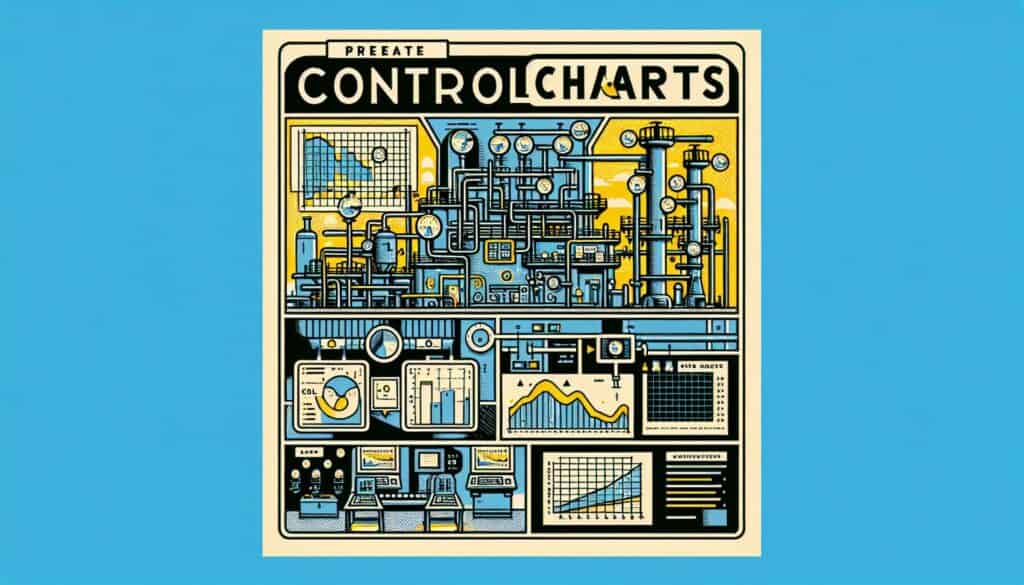通过在启动和运行过程中监控工艺设置,使用比控制图更宽的区域,防止生产不合格产品。
- 方法: 工程, 质量
控制前图表

控制前图表
- 持续改进, 错误预防, 精益制造, 加工能力, 流程改进, 生产效率, 质量保证, 质量控制, 统计过程控制 (SPC)
目标
如何使用
- 一种简单的统计工具,操作员根据规格限制检查少量连续零件,分为绿色(中心)、黄色(警告)和红色(停止)区域。根据零件所处的位置进行调整。
优点
- Simple to understand and use by operators; Provides immediate feedback on process stability; Focuses on defect prevention rather than just detection; Requires less data collection than traditional 统计过程控制 charts.
缺点
- 在统计上不如 Shewhart 控制图严谨;可能无法有效检测到微小的过程变化;在很大程度上依赖于操作员的纪律和正确解释。
类别
- 制造业, 质量
最适合:
- Providing a simple, operator-driven method for 过程控制 at the point of manufacture, particularly useful for short runs or where full SPC is impractical.
Pre-Control Charts serve as an effective tool for quality management and can be particularly advantageous in industries such as automotive, electronics, textiles, and food processing, where production often involves a significant number of distinct parts produced in short runs. This methodology is often utilized during the manufacturing phase, particularly in environments where rapid adjustments are necessary due to fluctuations in production or when implementing new processes. Operators and front-line workers, who are familiar with the production intricacies, typically initiate this approach, allowing for prompt decision-making based on real-time data. The simplicity of Pre-Control Charts makes them accessible for users without advanced statistical training, providing immediate visual cues through a straightforward color-coded system that delineates acceptable and unacceptable performance. This enables teams to engage more actively in the monitoring process, fostering a culture of defect prevention rather than merely waiting for issues to be identified through more extensive 统计过程控制 (SPC) mechanisms. Since the methodology requires less rigorous data collection, it allows companies to allocate resources efficiently, minimizing downtime and increasing responsiveness to quality issues. Furthermore, firms may find that integrating Pre-Control Charts into their workflows not only improves process reliability but also enhances the overall skill set of their workforce, empowering operators to take ownership of quality outcomes while effectively collaborating across departments for continuous improvement initiatives.
该方法的关键步骤
- Define the specification limits for the product.
- Determine the number of consecutive parts to be checked.
- Inspect each part against the defined limits.
- Classify the results into green, yellow, or red zones based on specifications.
- Implement immediate adjustments if parts fall into yellow or red zones.
- Continue monitoring the process and inspecting subsequent parts.
专业提示
- Ensure clear criteria for green, yellow, and red zones, involving operators in the definition process to enhance ownership.
- Implement regular training on reading and interpreting Pre-Control Charts to maintain operator engagement and competence.
- Utilize historical data to set realistic specification limits, allowing for continuous adjustments based on verified performance trends.
历史背景
1962
1970
1972
1980
1980
1986
1986
1960
1963
1970
1980
1980
1980
1986
1987
(如果日期不详或不相关,例如 "流体力学",则对其显著出现的时间作了四舍五入的估计)。















相关文章
制造运营管理(MOM)
制造执行系统(MES)
生产控制计划
人工测试
手动搬运评估表 (MAC)
手动任务风险评估工具(ManTRA)